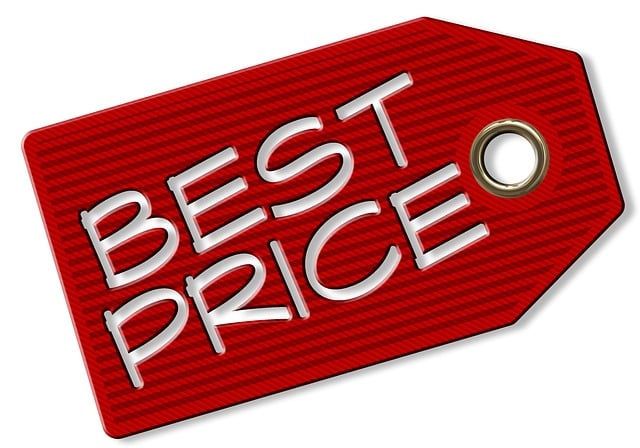Understanding consumer behavior is key to effective discount strategies. Businesses should analyze demographics, psychographics, and past purchases to implement successful pricing. Market-based pricing, coupled with competitive analysis and value proposition evaluation, enhances sales. Strategic discounting for slow-moving inventory optimizes turnover during peak seasons. Holidays and special occasions offer targeted price cuts, capitalizing on consumer behavior. Repeat business incentives, like loyalty programs, boost customer retention. Long-term focus includes personalized discounts and price segmentation for profitability while building strong client relationships.
Should you offer discounts to boost sales? Absolutely, when strategically applied, they can be a powerful tool. This article explores key moments to introduce price reductions for maximum impact. From understanding your target audience’s buying patterns to leveraging seasonal slow-movers or celebrating special occasions, each tactic targets specific sales drivers. Learn how to create a loyal customer base by incentivizing repeat business and fostering long-term retention through discount strategies that truly resonate.
- Understanding Your Target Audience's Behavior
- Identifying Slow-Moving Inventory or Seasonality
- Celebrating Special Occasions and Holidays
- Incentivizing Repeat Business and Loyalty Programs
- Strategizing for Retaining Long-Term Customers
Understanding Your Target Audience's Behavior

Understanding your target audience’s behavior is a crucial step in determining when and how to offer discounts to boost sales. Consumer behavior varies greatly depending on demographics, psychographics, and past purchasing experiences. By analyzing these factors, businesses can implement effective pricing strategies that resonate with their audience. For instance, market-based pricing mechanisms, which consider supply and demand, can be particularly successful during peak seasons or when introducing new products.
Performing a thorough price analysis allows retailers to identify pricing points that align with consumer expectations and preferences. This includes researching competitors’ offerings and understanding the value proposition of their own goods or services. When it comes to digital products, determining pricing for these items often involves a different approach compared to physical goods due to lower overhead costs. As a result, strategic discounting can be a powerful tool to attract new customers and encourage repeat purchases without compromising profitability, especially when combined with the insights gained from studying consumer behavior and the psychology behind their pricing preferences.
Identifying Slow-Moving Inventory or Seasonality

Identifying slow-moving inventory or seasonal trends is a strategic step to optimize your pricing strategy and boost sales. By analyzing which products are taking longer than expected to sell, retailers can strategically offer discounts to accelerate the turnover process. This approach leverages the concept of price elasticity of demand, understanding that certain items may have a higher or lower sensitivity to price changes. For instance, during holiday seasons, prices might need to be adjusted to meet heightened consumer demand; a price optimization tool can help navigate these fluctuations effectively.
Seasonal variations and slow-moving inventory can also guide retailers in finding the break-even point calculation for each product, ensuring that pricing strategies support profitability while driving sales. This data-driven approach allows businesses to make informed decisions about discounting, promotions, or even product repositioning, ultimately enhancing their ability to adapt and thrive in a competitive market with dynamic consumer behavior.
Celebrating Special Occasions and Holidays

When it comes to boosting sales, offering discounts is a powerful strategy that can be particularly effective during special occasions and holidays. Celebrating these events with promotional price cuts can attract customers and create a sense of urgency to purchase. For instance, retailers often see increased footfall during Black Friday or seasonal festivals like Christmas, where deeply discounted prices entice buyers. By aligning your discount strategies with cultural milestones, you tap into the inherent price sensitivity of customers during these times.
Holidays and special events offer unique opportunities for businesses to showcase their discounts and promotions management skills. For example, a clothing brand could host a “Summer Sale” to clear inventory ahead of the new season, or a food joint might create festive menus with discounted prices to attract families during holidays. These occasions allow retailers to experiment with various discount techniques, like percentage-based sales, buy-one-get-one offers, or bundle deals, which can significantly impact consumer behavior. Moreover, managing these discounts effectively contributes to the overall success of determining pricing for digital products anytime, ensuring both customer satisfaction and business profitability.
Incentivizing Repeat Business and Loyalty Programs

Incentivizing repeat business is a powerful strategy to boost sales and foster customer loyalty. Offering discounts can be an effective way to encourage customers to return for future purchases. Loyalty programs, built around a rewarding points system or tiered pricing structure, are excellent tools to motivate clients. For instance, a “buy 5 get 1 free” promotion not only provides an immediate incentive but also reinforces brand association. By offering exclusive discounts to loyal patrons, businesses can enhance customer retention and create a sense of exclusivity, fostering a long-term relationship.
When implementing such strategies, it’s essential to strike a balance between attracting new customers and rewarding regulars. Budgeting and pricing in projects should consider the cost of these incentives while ensuring they align with the brand’s image. Negotiating skills can help businesses secure better prices for supplies or services, allowing them to pass on savings to their customers without compromising profitability. Visit us at price discrimination: advantages and ethics anytime to explore how strategic pricing practices can drive sales while maintaining ethical standards.
Strategizing for Retaining Long-Term Customers

To increase sales and foster customer loyalty, businesses should strategize for retaining long-term customers by implementing thoughtful pricing strategies. One effective approach is to offer discounts tailored to individual customer needs and behaviors, rather than a one-size-fits-all model. By understanding the price sensitivity of customers and utilizing price segmentation techniques, retailers can create compelling offers that drive sales while maintaining profitability. For instance, providing exclusive discounts to frequent buyers or implementing dynamic pricing based on demand demonstrates a nuanced approach to pricing strategies across industries.
Moreover, recognizing that different goods exhibit varying elasticities means businesses can strategically adjust prices for perishable items versus those with lower price sensitivity. This ensures that promotions are effective in encouraging purchases while minimizing the impact on revenue. Ultimately, by combining insights into customer behavior and the economics of different products, retailers can design pricing strategies that foster a strong and lasting relationship with clients, ensuring business growth over time.
Offering discounts strategically can be a powerful tool to boost sales. By understanding your customers’ behavior, identifying slow-moving inventory, leveraging special occasions, and implementing loyalty programs, you can create an effective discount strategy. Additionally, focusing on long-term customer retention ensures consistent business. When used judiciously, discounts at the right time can significantly impact your bottom line and drive growth, all while keeping your pricing competitive in the market.
